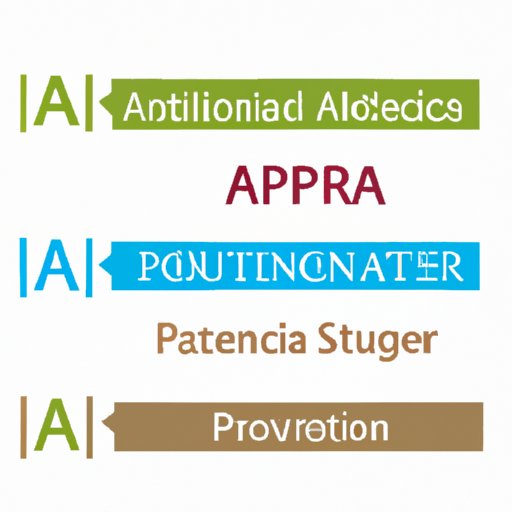
I. Introduction
Citing sources in academic writing is crucial to acknowledge the authors’ works and avoid plagiarism. It is equally vital to cite video sources as they have become more common in research papers, essays, and other academic writings. In this article, we will guide you through the process of citing videos in APA format, offer tips and tricks for accurate referencing, and explain why video citation is important in the academic and research context.
II. The Complete Guide to Citing Videos in APA Format: Step-by-Step Instructions
To cite a video in APA format, follow these step-by-step instructions:
1. Start with the author’s name, last name first. If the video has no author, use the name of the organization that produced the video.
2. Include the publication date of the video in parentheses. If the date is unknown, use n.d.
3. Write the title of the video in italics.
4. Indicate the type of video (e.g., lecture, webinar, movie) in square brackets.
5. Include the URL of the video, or the DOI (Digital Object Identifier) in the reference list.
Here is an example of how to cite a YouTube video in APA format:
Smith, M. (2019, October 1). APA citation for beginners [Video]. YouTube. https://www.youtube.com/watch?v=7MDSJQ9hZ8s
III. Mastering APA Video Citation: Tips and Tricks for Accurate Referencing
To master video citation in APA format, here are some tips and tricks:
1. Use the most up-to-date APA manual for video citation guidelines. The latest version is the 7th edition.
2. When citing a video, include as much relevant information as possible (e.g., author, title, date, type, publisher, URL).
3. Check the video and make sure that the information you are citing is accurate and complete.
4. Use citation management software (e.g., Zotero) to automate the citation process and minimize errors.
5. Double-check your references using online citation generators (e.g., EasyBib) to ensure they are in APA format.
IV. Why Video Citation is Important in APA and How to Do it Right
It is crucial to cite video sources in academic writing to:
1. Give credit to the authors’ work and ideas
2. Allow readers to locate and access the sources
3. Provide evidence to support claims and arguments
4. Avoid plagiarism and copyright infringement
Improper citation of video sources can lead to serious consequences, such as:
1. Accusations of plagiarism
2. Rejection of research papers, essays, or other academic writings
3. Legal action for copyright infringement
To avoid these consequences, use the tips and tricks discussed in this article to do it right.
V. A Beginner’s Guide to APA Video Citation: Examples and Explanations
Here are some examples of how to cite different types of videos in APA format:
– Lecture:
Smith, J. (2021). Introduction to APA citation [Video]. Khan Academy. https://www.khanacademy.org/science/grammar/punctuation-the-comma-and-the-apostrophe/introduction-to-commas-and-semicolons/v/commas-punctuation
– Webinar:
Doe, J. (2020, August 12). Data analysis in Excel [Webinar]. Zoom Video Communications. https://zoom.us/webinar/1234567890
– Movie:
Scorsese, M. (Director). (2019). The Irishman [Motion picture]. Netflix.
VI. Breaking Down the Basics of APA Video Citation: Everything You Need to Know
To sum up, citing video sources in academic writing is crucial to acknowledge the authors’ work, allow readers to locate and access sources, provide evidence to support claims and arguments, and avoid plagiarism and copyright infringement.
To do it right, use the most up-to-date APA manual for video citation guidelines, include as much relevant information as possible, check your references, and use citation management software and online citation generators.
VII. Conclusion
We hope this article has provided you with a comprehensive guide, tips, and tricks for accurate referencing of video sources in APA format. Remember to always cite your video sources properly to avoid plagiarism and ensure academic integrity. Use the information learned in this article in your own research and academic writing.




